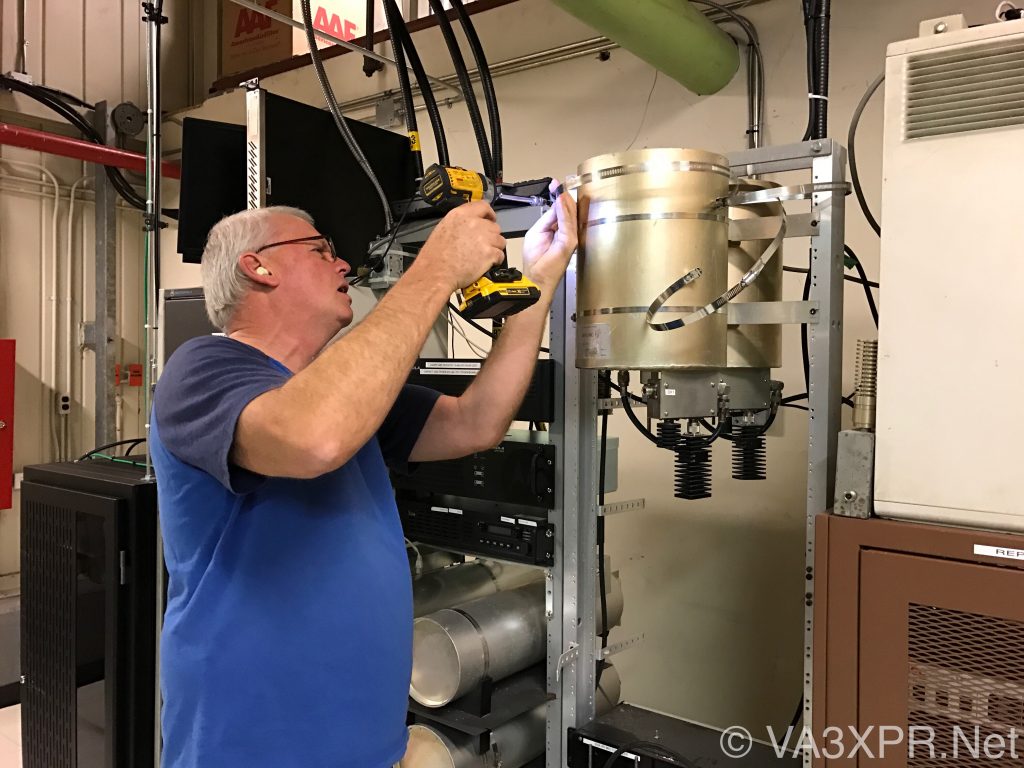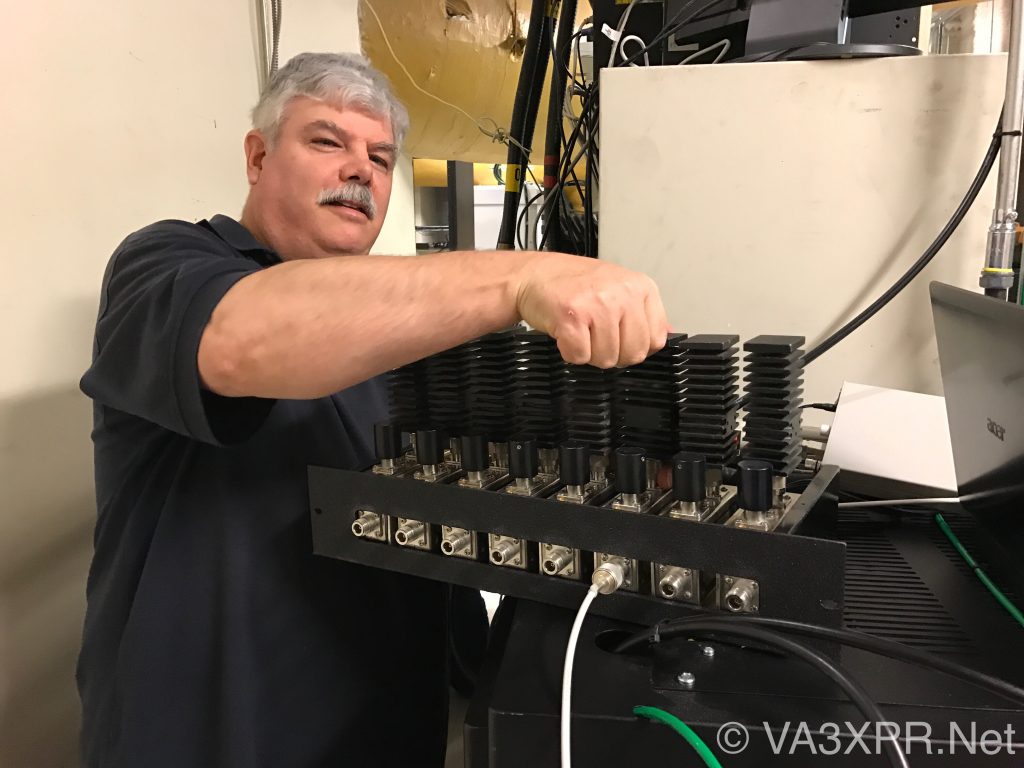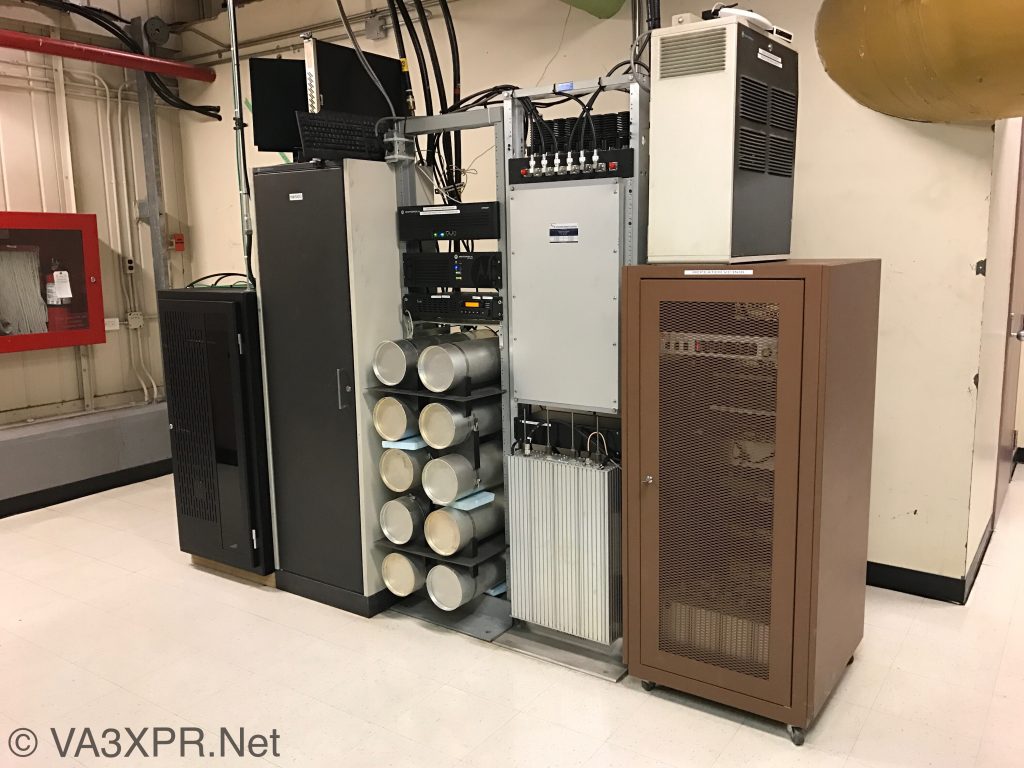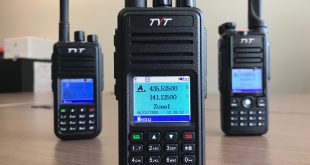
On December 31st, Toronto area hams got a late Christmas present that would greatly improve their ham radio operations in 2017 and beyond. As it was on this day that the technical team supporting the repeaters at the VA3XPR-1 repeater site, including those operating under the call signs VE3YYZ, VE3WOO and VE3NIB, made a significant upgrade to these repeaters that would significantly improve their transmit performance.
DON’T MISS: Review of the Connect Systems CS580 DMR portable radio
The first change came with the replacement of the transmitter combiner at the site. The previous transmitter combiner, which allowed all of the UHF repeaters to transmit on the same antenna simultaneously, caused insertion loss of about 7dB for all systems. For example, VA3XPR-1 has a transmitter output power of 90W and previously, this was reduced to a mere 18W coming out of the transmitter combiner, however after the upgrade, the power output was increased to 38W coming out of the transmitter combiner – a 3dB increase or doubling in output power!

So why was the insertion loss so high before the upgrade? Well, the original transmitter combiner was constructed to accommodate five transmitters and was “hacked” to accommodate a sixth repeater when VA3XPR-1 was moved to this site in January 2015. The result of this “hack” was increased insertion loss for all of repeaters using the combiner. With the new transmitter combiner, all repeaters can now be accommodated with a much lower insertion loss, thereby effectively doubling the power output to the antenna for each repeater. No doubt that hams around the greater Toronto area will see improved coverage from these repeaters because of this change.

In addition the upgraded transmitter combiner at the repeater site, the team also did some tweaking of the receive bandpass filter for all of the UHF repeaters, which achieved about a 1dB improvement in the receive sensitivity for all repeaters. While this may not sound like much, when it comes to repeaters, every little bit of loss that can be removed from the system makes the repeater perform even better for all users.
Now it wouldn’t be ham radio if something didn’t go wrong along the way. The first problem was that the Asterisk node for the VE3YYZ FM repeater didn’t boot-up once the power was turned back on. The second problem, which was not realized until after the team left the repeater site, was that the receive sensitivity of all of the UHF repeaters had dropped for some unknown reason. It was concluded that this problem was likely due to a loss of electrical power to the receive multicouple – the device that allows each repeater to connect to the receive antenna, which would cause a 18dB attenuation for received signals to each repeater. Sure enough, on a subsequent visit to the site by Don Trynor, VA3XFT on January 2nd, it was discovered that this was indeed the cause and the problem was quickly rectified. Also, with a bit of handiwork, the Asterisk node was also brought back on-line again by reseating of the RAM memory chips in their motherboard slots and reconnecting the hard drive connections to the motherboard of the PC – a common problem for older PCs. So fortunately, all problems were fixed and the site is back in business, better than ever.

A special thanks goes out to Jon Rorke, VA3RQ and Rick Reemeyer, VE3RNK, for the time, effort and resources that they have invested into building the new transmitter combiner for the repeater site. You can be assured that these are neither cheap nor easy to build and the ham community is very fortunate to have the technical expertise of these gentlemen helping to make our ham radio operations in the greater Toronto area simply awesome. If you agree, please show your support and share this posting with your ham radio friends!
 VA3XPR Exploring the World of Digital Ham Radio
VA3XPR Exploring the World of Digital Ham Radio





